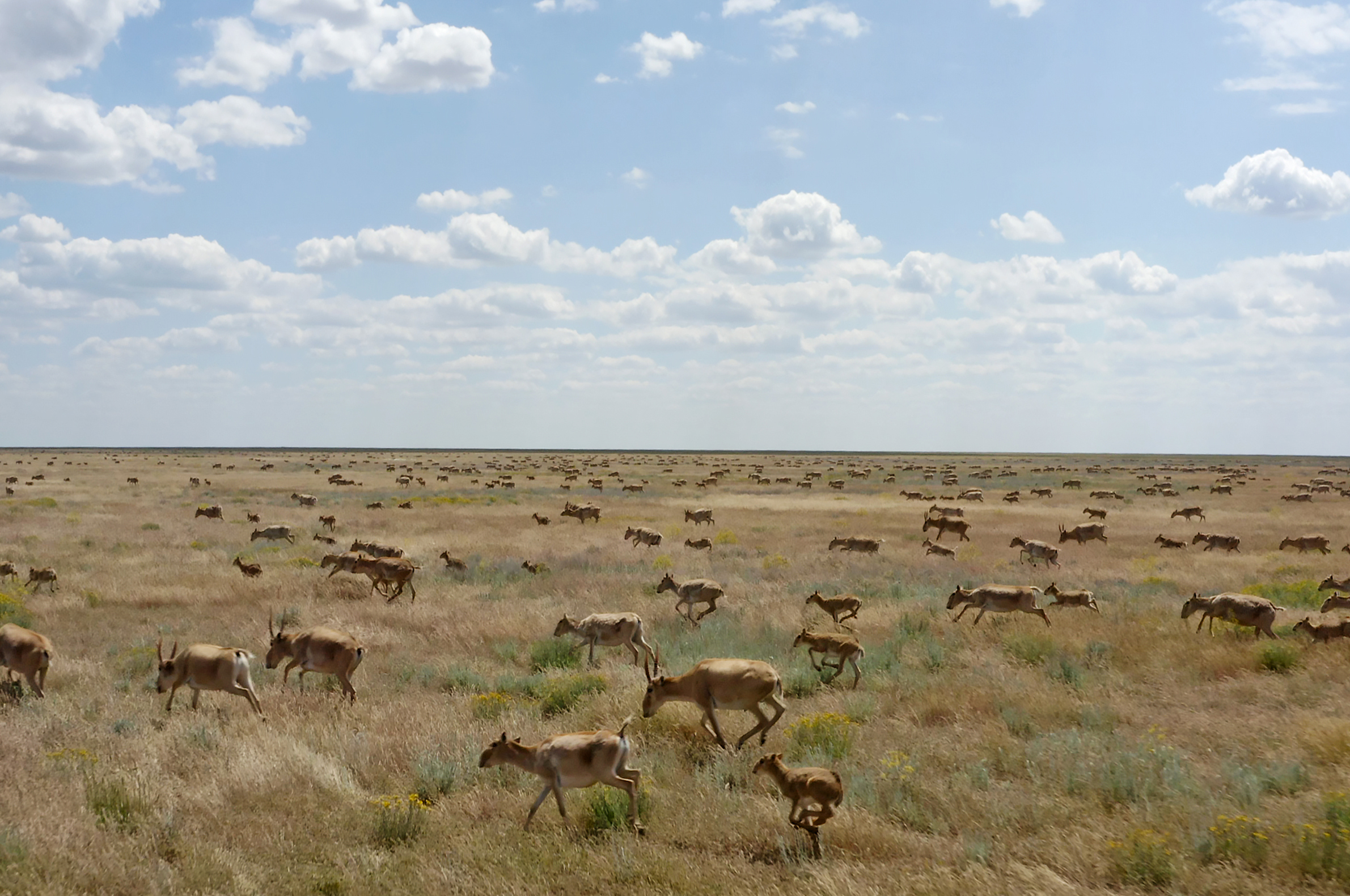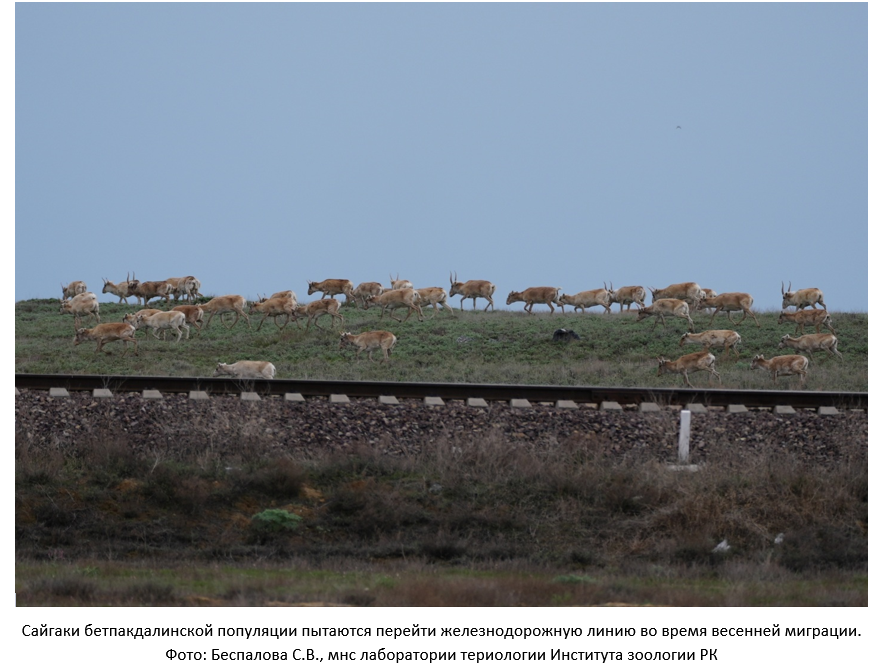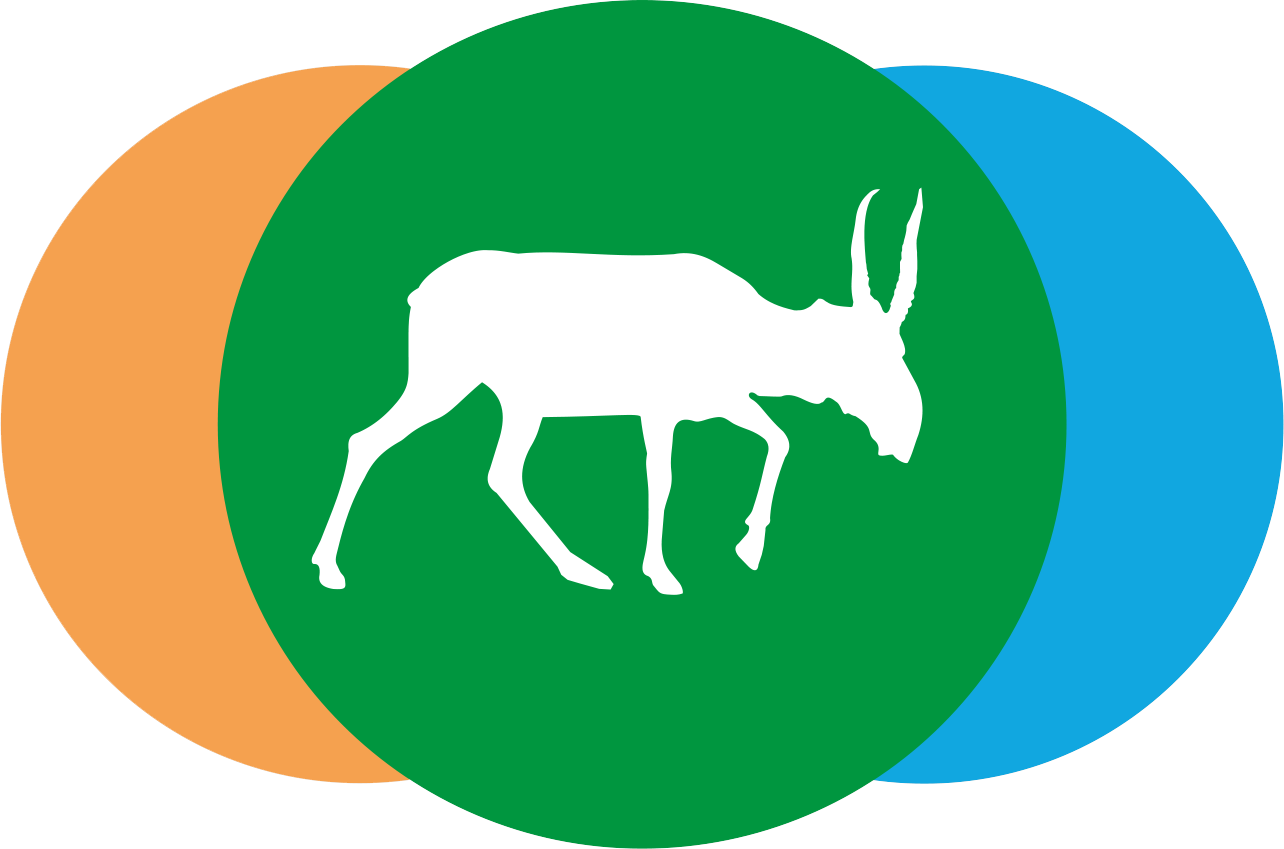Project Leader: Nazerke Alimkyzy Bizhanova
Implementation period: 2023–2025
IRN: AP19680227
Relevance
The negative impact of linear infrastructure on animal populations has become a global problem. The rapid development of Central Asian countries, the expansion of trade between China and Europe, and the exploitation of mineral resources have led to the construction of highways, railways, and other facilities. Transport routes intersect traditional migration corridors, disrupt migration processes, fragment habitats, and often result in direct mortality of animals. In Kazakhstan, new highways and railways are being actively constructed and planned, many of which cross saiga migration routes. This poses a serious concern for the conservation of saiga populations—a mass ungulate species of high ecological and economic importance that migrates over long distances. The project is aimed at addressing this pressing issue.
The goal of the project is to assess and forecast the impact of existing and planned transport routes and associated infrastructure on saiga populations and to develop recommendations to mitigate or prevent harm to wildlife.
To achieve this goal, the project includes the following objectives:
1) To analyze the location of existing and planned highways and railways and identify those that intersect or may intersect saiga migration routes.
2) To determine the extent of saiga range reduction caused by the construction of major transport corridors.
3) To conduct ground-based, aerial, and satellite monitoring of saiga movements during spring and autumn migrations to identify potential crossing points and determine optimal locations for wildlife passages.
4) To assess the scale of saiga mortality along highways and railways and identify problem areas along existing transport routes.
5) To evaluate the effectiveness of existing earthen wildlife crossings along new transport routes in the Ustyurt Plateau and Central Kazakhstan.
6) To explore possibilities for rerouting future roads to bypass key saiga habitats and minimize impacts on their populations.
7) To develop recommendations for reducing or preventing the negative effects of transport infrastructure on saiga populations.
Project Team:
Principal Investigator: Nazerke Alimkyzy Bizhanova, PhD, Senior Researcher, Laboratory of Theriology, ORCID ID: 0000-0002-1804-2511, Scopus ID: 57874162200, h-index 2
Responsible Researcher: Alexey A. Grachev, Acting Head of the Laboratory of Theriology, ORCID ID: 0000-0001-6051-8299, Scopus ID: 57873983000, h-index 2
Theriological Laboratory Staff of the Institute of Zoology, Committee of Science, Ministry of Higher Education and Science of the Republic of Kazakhstan

Preliminary Research Results:
1. Analysis of transport infrastructure threats: Departmental and internal data were analyzed to identify critical sections of roads crossing saiga migration routes. It was found that the Zhezkazgan–Saksaulsky and Shalkar–Beyneu railways have become serious barriers to migration, leading to changes in traditional routes and reducing migration distances.
2. Assessment of current and historical range: Retrospective and modern data on saiga distribution were analyzed. Range reductions were attributed to several factors, including poaching, severe winters (dzut), and epizootics. Since the mid-2000s, population recovery and partial range expansion have been observed, though the overall range remains fragmented.
3. Identification of range reduction factors: The study highlighted the increasing role of infrastructure barriers in recent range changes. While roads previously had a minor impact, in recent years they have become a major factor limiting migration and access to traditional wintering grounds.
4. Population size and spatial structure: Ground and aerial surveys were conducted across the ranges of the Ural, Ustyurt, and Betpak-Dala saiga populations. In April 2024, the team participated in the annual national aerial census of saigas, collecting data on population size and spatial distribution. It was confirmed that the Shalkar–Beyneu and Zhezkazgan–Saksaulsky railways significantly disrupt migration routes.
5. Recording saiga mortality: A total of 2,850 km of routes were surveyed during the spring–summer season of 2024. Eleven cases of saiga calf mortality caused by road traffic were recorded in the Ural population, and 25 adult saigas were reported killed by trains along the Shubarkol–Kyzylzhar railway. All incidents were entered into a unified GIS database, and monitoring is ongoing.
6. Effectiveness of existing wildlife crossings: Forty-three camera traps were installed at earthen crossings on the Ustyurt Plateau. No saiga crossings were recorded, indicating their ineffectiveness. Visual observations showed that saigas avoid approaching the railway closer than 500–1000 meters. The railway’s structural features (high embankments, fencing, and power lines) create strong visual barriers for animals.
7. Identification of optimal crossing locations: Based on ground surveys and GIS analysis, considering topography, migration routes, and seasonal distribution, two optimal sites for constructing saiga crossings across the Shalkar–Beyneu railway on the Ustyurt Plateau were identified.
Work in all directions continues until December 2025. Based on the research results, recommendations will be developed to mitigate or prevent the negative impact of transport infrastructure on saiga populations, including guidance on optimal locations and design of wildlife crossings.

List of Publications:
- Grachev Yu., Bizhanova N., Grachev A. Linear transport infrastructure in saiga antelope (Saiga tatarica) habitats in Kazakhstan // 2nd International Conference on Electrical and Power Engineering ICPE-CA “ASMES 2024: Advanced Structures, Materials and Electrical Systems”. – Tulcea, Romania, 2024. – P. 47–48.
- Begilov T.Z., Bizhanova N.A., Eszhanov B.E., Sarsenova B.B. Current ecological status of the Edil–Zhaiyk saiga population and issues of sustainable population development // Vestnik KazNU. Ecological Series. – 2024. – Vol. 80. – No. 3. – P. 56–67. https://doi.org/10.26577/EJE.2024.v80.i3-06
- Bizhanova N., Grachev A., Rametov N., Baidavletov Y., Saparbayev S., Bespalov M., Bespalov S., Kumayeva I., Grachev Y. Railway and road infrastructure in the saiga antelope range in Kazakhstan // Diversity, 2025. In press.
